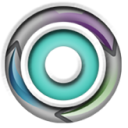 Introduction to ANSYS Mechanical APDL
Introduction to ANSYS Mechanical APDL
Introductory
This course is recommended for anyone who wishes to perform Finite Element Analysis (FEA) of mechanical parts and has little or no ANSYS Mechanical APDL (MAPDL) software experience. The ANSYS Mechanical APDL workflow, graphical user interface, along with the APDL command syntax, will be introduced to users. The focus will be on linear static structural analyses, although the concepts presented will provide a strong foundation to allow the user to solve other physics, such as thermal analyses, or more complicated analysis procedures with ANSYS Mechanical APDL. After completing the course, attendees should be able to use the ANSYS Mechanical APDL software efficiently to set up, solve, and postprocess linear static analyses. Please note that for those wishing to learn the Workbench version of ANSYS Mechanical should attend the "Introduction to ANSYS Mechanical" training course instead.
 ANSYS Mechanical Linear and Nonlinear Dynamics
ANSYS Mechanical Linear and Nonlinear Dynamics
Advanced
Acquire the advanced skills necessary to perform a wide range of dynamic finite element structural analyses in ANSYS Mechanical. Learn and apply complete solution procedures for modal, modal cyclic symmetry, linear perturbation, harmonic, response spectrum, random vibration, and transient analysis. Explore several alternative solution techniques and the inclusion of all available nonlinearities.
 Introduction to ANSYS SpaceClaim
Introduction to ANSYS SpaceClaim
Introductory
This course will be a major benefit for all engineers to prepare their geometry for any kind of analysis using the ANSYS Workbench. The training course will teach students how to create and modify their geometry inside and outside the ANSYS Workbench environment using ANSYS SpaceClaim.
 Introduction to ANSYS Meshing
Introduction to ANSYS Meshing
Introductory
This online course will be of major benefit to all engineers intending to perform CFD or FEA simulations. The basic principles of mesh generation, the workflow and best practices for efficiently creating meshes for ANSYS CFD simulations or for ANSYS Mechanical will be presented and practiced.
 PrepPost Tips and Tricks
PrepPost Tips and Tricks
Advanced
Our Tips & Tricks articles and videos explore advanced topics and techniques that extend beyond the typical curriculum of standard ANSYS training courses. This course offers in-depth information about ANSYS PrepPost packages such as ANSYS SpaceClaim, ANSYS DesignModeler, and ANSYS DesignXplorer. Our course provides comprehensive insights and practical tools for effective application in real-world scenarios.
 Introduction to ANSYS DesignModeler
Introduction to ANSYS DesignModeler
Introductory
The ANSYS DesignModeler training course will teach users how to create and modify their geometry in preparation for their analysis in ANSYS Workbench, this course is intended for both FEA and CFD users. Students who attend this course will learn to navigate within the graphical user interface, create, modify and/or cleanup their geometry in preparation for their analyses, generate 2-D sketches and convert them into 2-D or 3-D models, modify 2-D and 3-D geometry, and more.
 Introduction to Ansys SpaceClaim for FEA
Introduction to Ansys SpaceClaim for FEA
Introductory
This course is designed for FEA users of Ansys SpaceClaim that would like to benefit from its Meshing capabilities. SpaceClaim Meshing uses the Mesh ribbon in Ansys SpaceClaim to generate the mesh on some or all the parts of your geometry before importing the model into Ansys Mechanical for solver simulation. With this SpaceClaim Meshing tool, you will be able to get 100% hex mesh on complicated CAD geometries. You will be introduced to the different tools and block types. You will also learn the different meshing approaches. Finally, template modeling, a technique to automate hex meshing, will be presented.
 Introduction to Rocky
Introduction to Rocky
Introductory
Rocky DEM is a powerful, 3D Discrete Element Modeling (DEM) program that quickly and accurately simulates the granular flow behavior of different shaped and sized particles within a conveyor chute, mill, or other materials handling equipment. The workshops provide everything you need to walk through setting up, running, and post-processing real Rocky cases at your own pace. Complete them in the order provided to gain the most benefit, or use the Index to locate Workshops containing specific features or tasks.
 ANSYS Workbench Acoustics ACT
ANSYS Workbench Acoustics ACT
Advanced
ACT Acoustics extension is a customization made with ACT to integrate ANSYS acoustics capabilities in Mechanical. The extension consists of one XML file (Configures the UI content) and one python script (Implements the extension functionality).
 Introduction to ANSYS SpaceClaim Meshing
Introduction to ANSYS SpaceClaim Meshing
Introductory
This course is designed for users of ANSYS SpaceClaim that would like to benefit from its Meshing capabilities. SpaceClaim Meshing uses the Mesh ribbon in ANSYS SpaceClaim to generate the mesh on some or all the parts of your geometry before importing the model into ANSYS Mechanical for solver simulation. With this SpaceClaim Meshing tool, you will be able to get 100% hex mesh on complicated CAD geometries.
 Introduction to ACT Mechanical
Introduction to ACT Mechanical
Introductory
With ANSYS ACT, you can create a customized simulation environment that enables your engineering team to capture and use expert knowledge, specialized processes, and best practices, improving productivity, efficiency and effectiveness. The software enables you to encapsulate APDL scripts, create custom menus and buttons to incorporate your company's engineering knowledge, embed third-party applications, and create your own tools to manipulate simulation data. ANSYS ACT enables you to encapsulate a customer's APDL script within ANSYS Mechanical. You can create custom entities within ANSYS Mechanical to incorporate your company's best practices through menus and buttons - a user-friendly approach to expose complex capabilities. ACT capabilities allow you to embed third-party applications within ANSYS Mechanical, ranging from external executables that compute data for pre- or post-processing all the way up to solvers. In addition, you can create tools to manipulate simulation data, such as meshing.
 Introduction to ANSYS AIM
Introduction to ANSYS AIM
Introductory
ANSYS AIM makes upfront simulation easy by combining intuitive, guided workflows, accurate simulation results and optimization in a complete simulation tool. Integrated geometry modeling based on ANSYS SpaceClaim technology helps you create new 3-D concept models, or edit/repair existing geometry. Whether a simulation includes electromagnetics, thermal, structures, or fluids or combinations thereof, all aspects of simulation workflow are included in the single-window design, which enables you to predict complete product performance with results you can trust. AIMΓÇÖs powerful parametric and optimization capabilities can automatically explore the design space thoroughly and find the best design faster.
 Rocky Webinars
Rocky Webinars
Introductory
These one-hour events are hosted by our experienced engineers and cover a variety of ANSYS software topics. Rocky DEM is a powerful, 3D Discrete Element Modeling (DEM) program that quickly and accurately simulates the granular flow behavior of different shaped and sized particles within a conveyor chute, mill, or other materials handling equipment. The workshops provide everything you need to walk through setting up, running, and post-processing real Rocky cases at your own pace. Complete them in the order provided to gain the most benefit, or use the Index to locate Workshops containing specific features or tasks. Our course provides comprehensive insights and practical tools for effective application in real-world scenarios.
 Introduction to ANSYS SCADE Suite
Introduction to ANSYS SCADE Suite
Introductory
ANSYS SCADE Suite is a software design product line for embedded control software modeling, verification and code generation. ANSYS SCADE Suite provides a user-friendly and intuitive model-based environment for software engineers. This course is an introduction to the ANSYS SCADE Suite environment. You will learn how to create a complete project starting from modeling, traceability, simulation, report generation, down to C or Ada code generation with the SCADE Suite KCG code generator and final integration.
 ANSYS SCADE Suite Model Optimization and Code Performance
ANSYS SCADE Suite Model Optimization and Code Performance
Advanced
This advanced training course provides ANSYS SCADE Suite users with a comprehensive view on how to optimize ANSYS SCADE Suite models to reach the best performance for the generated code. You will learn how ANSYS SCADE Suite model architecture influences performance, what are efficient modeling patterns, and how to select KCG code generation options for optimal runtime performance of the generated code. The course also offers a specific focus on ANSYS SCADE Suite Timing and Stack Verifier to profile an ANSYS SCADE Suite application, on best practices, returns on experience, and first keys to improve oneΓÇÖs design.
 Introduction to ANSYS SCADE Display
Introduction to ANSYS SCADE Display
Introductory
ANSYS SCADE Display is a Human-Machine Interface (HMI) design product line for embedded HMI modeling, verification and code generation. ANSYS SCADE Display provides a user-friendly and intuitive model-based environment for HMI design engineers. This course is an introduction to the ANSYS SCADE Display environment. You will learn to create a complete project starting from modeling, traceability, simulation, report generation, down to C code generation with the SCADE Display KCG code generator and integration in the final application with OpenGL®.
 Introduction to ANSYS SCADE Solutions for ARINC 661
Introduction to ANSYS SCADE Solutions for ARINC 661
Introductory
ANSYS SCADE Solutions for ARINC 661 Compliant Systems is a tool suite for creating and simulating the logics and the graphics/interaction aspects of ARINC 661 compliant Cockpit Display Systems (CDS) and User Applications (UA), together with the associated code and Definition File (DF) generators. This course is an introduction to the building of ARINC 661 user applications with ANSYS SCADE UA Page Creator and ANSYS SCADE Suite. You will learn to create complete User Applications compliant with the ARINC 661 standard, to separate UA graphics, UA logic modeler, and UA communication. The course also offers specific focuses on ARINC 661 standard, on UA Definition File (DF), on Definition Files generation, and on UA Communication Code with the UA logic created with ANSYS SCADE Suite UA Adaptor.



